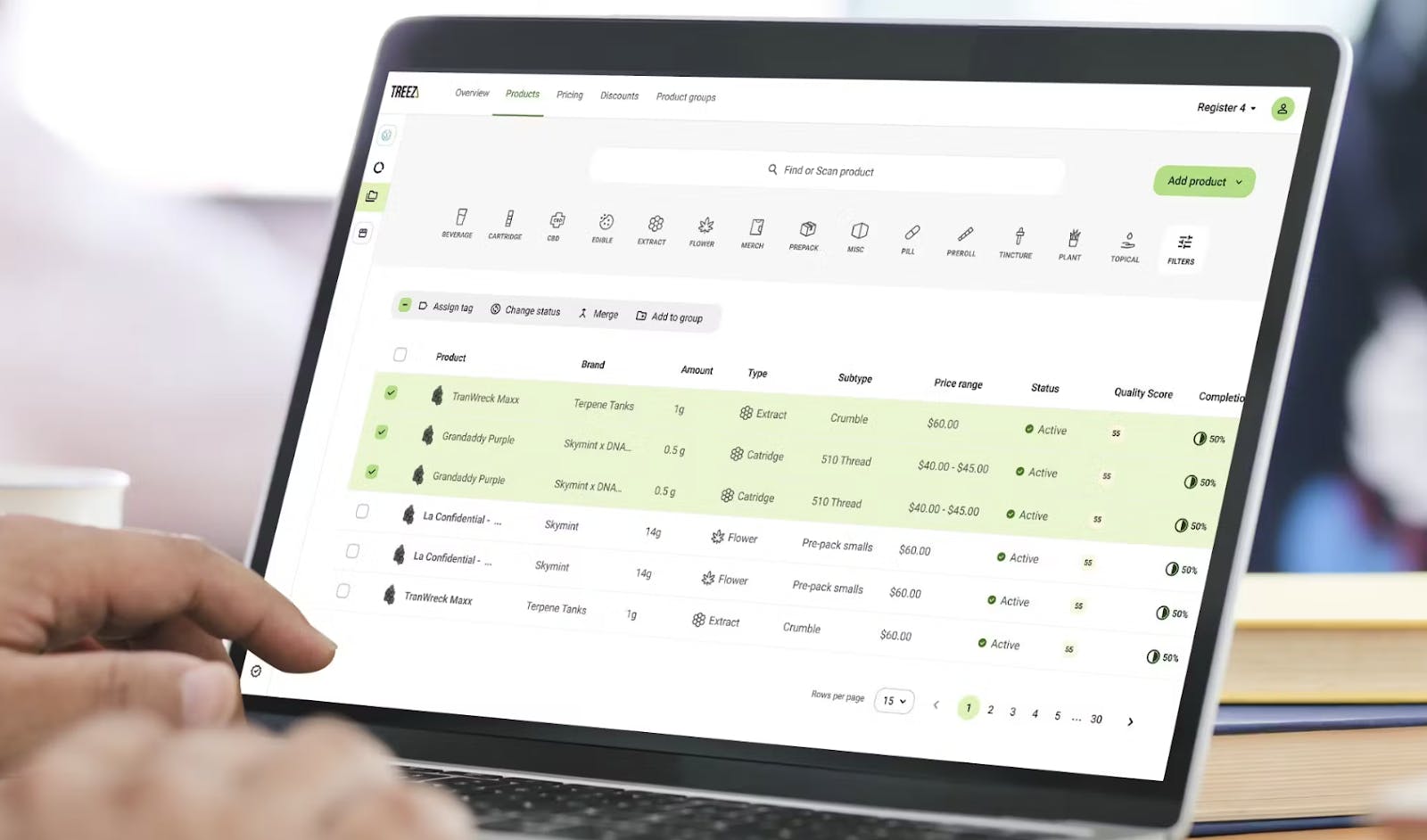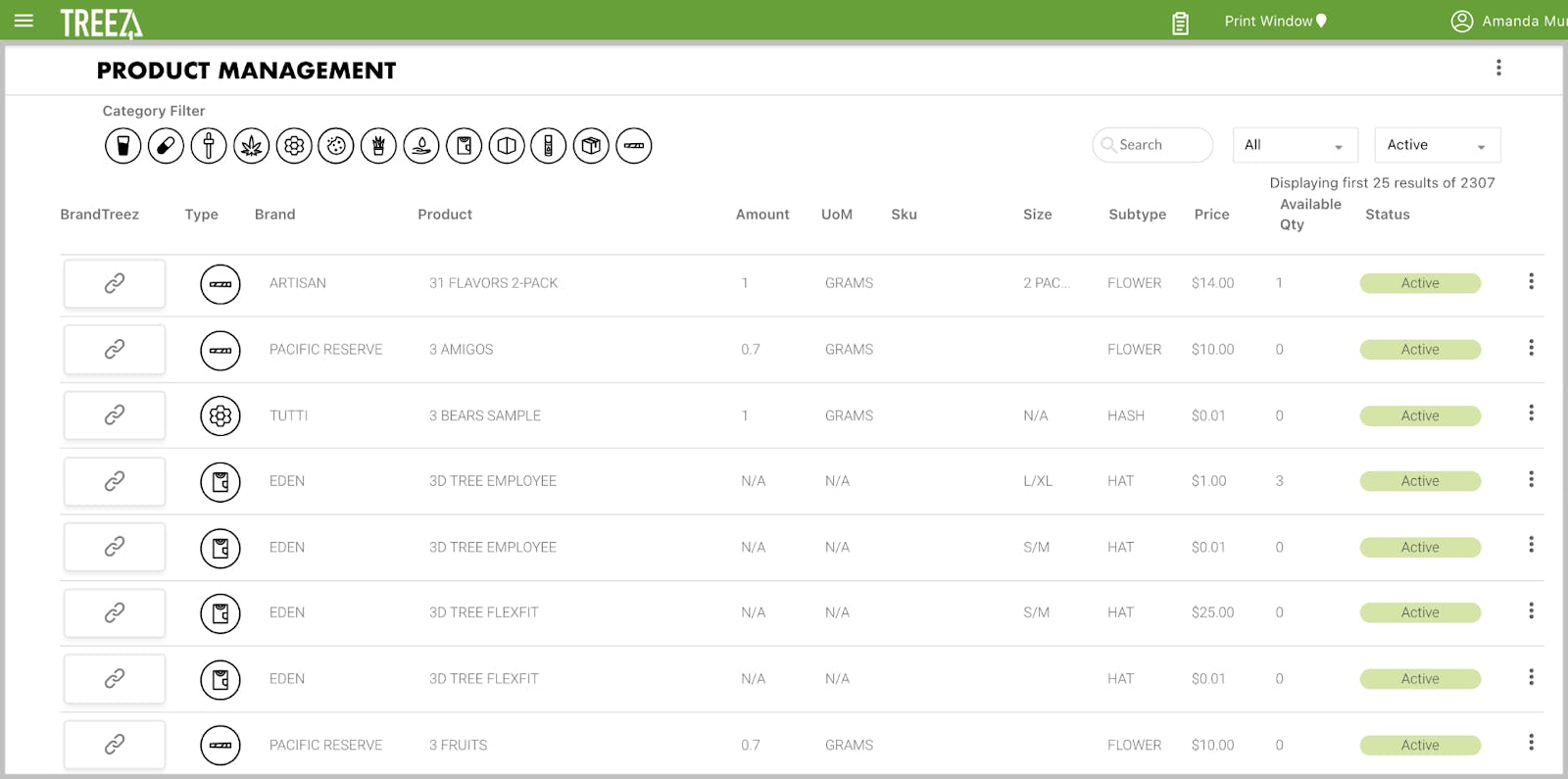How to Use a Cannabis POS for Improved Product Management and Cataloging

When you’re running a cannabis dispensary or retail business, managing your catalog of products is crucial. It not only ensures you’re cataloging all the products with the right set of information in your inventory, but also presenting them in the right manner to consumers to meet their demand and maintain quality based on their feedback.
While there are several tools that independently address product management for cannabis businesses, let’s take a look at how a cannabis POS system like Treez can do it for you in one place.
What is product management in a cannabis POS?
Product management is the process of methodically cataloging the products available in your inventory. This includes storing details like product name, description, pricing, ingredients, documentation and other information that helps your budtenders assist consumers, and at the same time, also help consumers learn more about the products they are exploring.
In a cannabis POS system, the product management module is where you can view, create and edit the products available at the dispensary or the different retail locations. This is what it looks like if you’re using Treez; learn how to create and add a product in Treez cannabis POS software.

Also read: Difference between inventory, package, and product
Why is product management important for cannabis businesses?
Product management may look like having to find, document, and store a lot of data for every item you intend to sell; which goes beyond the usual information one stores for inventory management. But let’s take a look at why it is important:
- Create a single source of truth - Imagine having to manage different inventory at different locations of your business; managing catalogs manually can result in errors in documentation and product updates.
- Keeps information up-to-date - As you start to sell, you may want to update product information, pricing, usage, brand collaterals and other information. Using a cannabis POS system for product management ensures that the updates/ changes made are reflected across all the customer touchpoints.
- Helps enable sales - When you have all the products cataloged methodically, you help budtenders understand them better. This helps them assist consumers in identifying the products best suited for their needs and improve sales at all touchpoints with assisted selling.
- Enables product discovery - When products are detailed out and segmented into strategic collections, it helps consumers easily browse through what’s available with your cannabis business. Similar to the usual collections on an eCommerce store’s navigation, this helps ease product discovery - for instance, they can browse through products based on concern, goal, and other parameters.
- Simplifies product education - With all the information regarding products like ingredients and documentation on ideal usage/ dosage, educating consumers becomes easier. This also helps ensure there is no misuse of products, leading to better customer experiences.
- Bridge the gap between online and offline selling - Reduces customer confusion and duplicate orders by unifying your in-store and online product menus, while also giving customers more convenient and accurate order fulfillment options.
- Ensure compliance - Selling cannabis requires businesses to follow a number of rules and regulations. These compliances may be based on the type of product you sell, its ingredients, its potency, or who you sell to - product management ensures that you have the right set of data and information at hand to ensure that you’re not breaking the law at any instance while scaling your business.
- Forecasting - Slightly similar to the benefits of inventory management, product management helps understand consumer demand over a period of time, pricing change patterns and their impact on your business revenue, and forecast growth more accurately.
What information should you catalog for effective product management?
While the data you need to store regarding all the products available in your inventory may vary based on your business and the states you operate in, here are a few key aspects that should definitely be covered in your product card:

- Product details - This includes all the basic information about the product such as its name or the name you have assigned to it, classification, size, etc.
- Pricing - This is where you define how much you charge customers for a product; it could be a flat price (where the cost is fixed) or a tier price (which discounts higher quantities purchased).
- Attributes - This information further helps define the product for a customer and can include details like general characteristics (organic, hydroponic, outdoor, etc), flavor (taste of product like fruity, piney, etc), effect (feeling a user can experience like relaxing, energizing, etc), ingredients (elements included in the product like dairy, gelatin, etc).
- Barcodes - This section includes the product’s barcode information and SKU, which can be used to scan and record at the point of sale.
- eCommerce - This allows you to add a display name, photo and description of the product to your online menu for consumers to browse through easily.
- Collections - This is where certain products can be tagged as a part of a collection that groups items together based on common characteristics. Creating collections also helps ease product discovery for consumers.
- Inventory - This information gives you a glimpse at the product’s inventory details which has an impact on the availability for sales and the sale limits you set.
- Files - This allows you to upload documents related to a product in your inventory; for instance, testing results, brand literature, photos, etc.
- History log - This tracks actions that have been taken on the product over a period of time. It serves as a log that includes the information added about a product, the edits made to it, who made the changes and when they were made.
How to get started with product management for your cannabis business?
Streamlined product management also helps with easy omnichannel selling, which can be beneficial as you scale your cannabis business. This can include opening multiple dispensaries at different locations, or setting up online stores or retail outlets.
To keep all your product data in one place, you require a system that is able to help you catalog the items in your inventory at each customer touchpoint, while giving you an overview of it all on one dashboard.
This is where a cannabis POS software like Treez comes into play.
From helping cannabis businesses document products in detail, ensuring this information remains up-to-date to enabling budtenders to improve sales with complete, accurate offerings to buyers, the platform is able to do it all - all while ensuring complete compliance.
Book a demo today to know more.